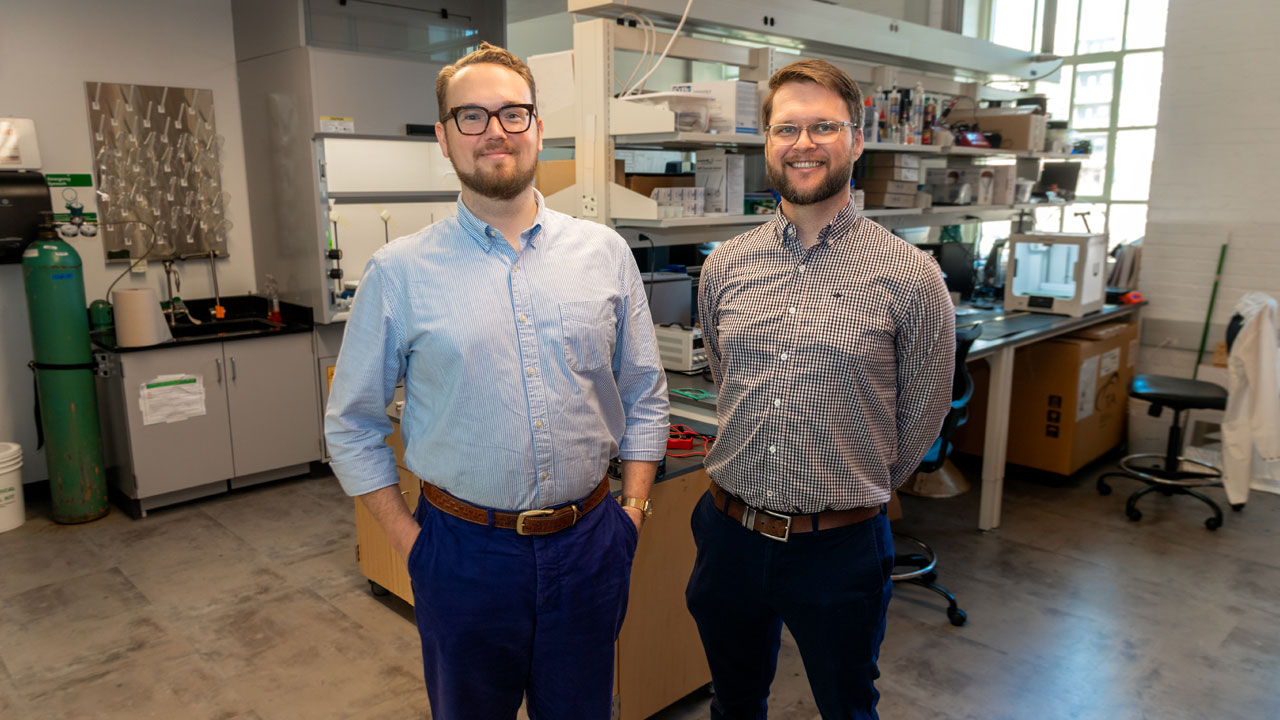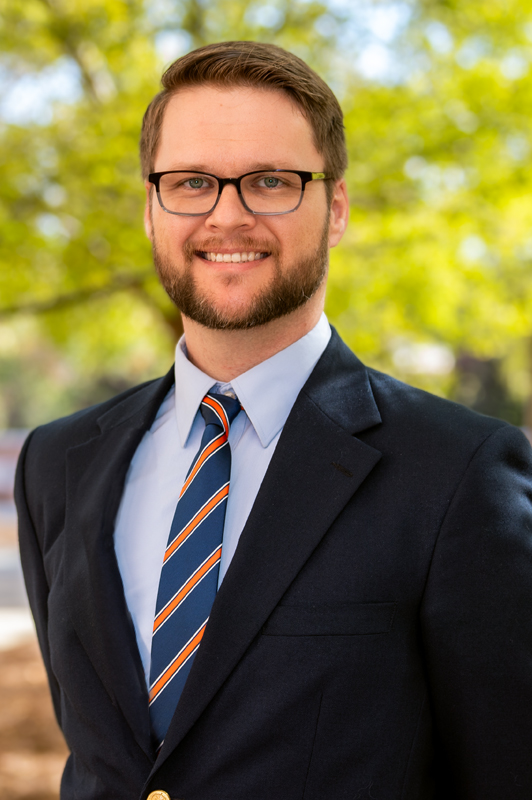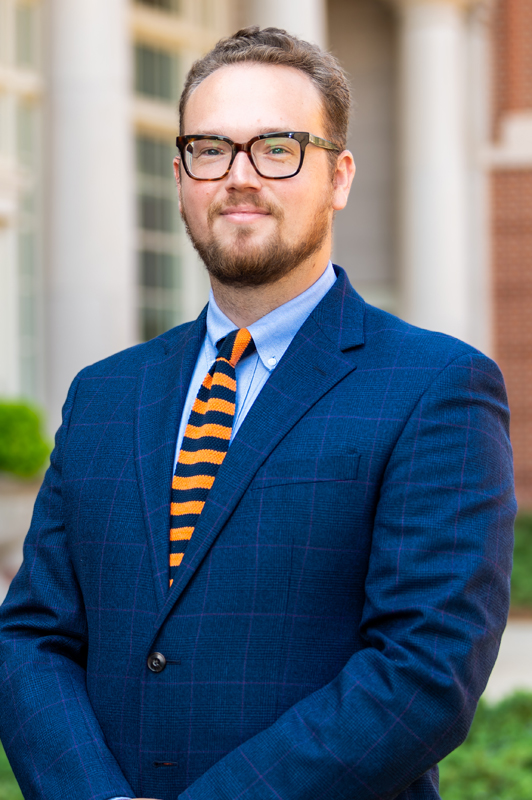Multidisciplinary research team works with Toyota to explore creative safety devices
Published: Feb 28, 2023 8:00 AM
By Joe McAdory
An 18-wheeler suddenly swerves into your lane at high speed. Recognition of this life hazard sends a signal from the brain to your right foot and arms to quickly brake, and/or take evasive action with the steering wheel. How long does this impulsive reaction take? One second? A half-second? Is this fast enough?
Two Auburn Engineering professors, Russell Mailen and Chad Rose, are partnering with Toyota Research Institute North America to develop a potential solution that might trim emergency reaction time and save lives.
The goal of their project, “Conducting Polymers as Non-Woven Fabric Sensors to Enable Novel User Interfaces,” is to create smart, flexible human interfaces with embedded sensors capable of measuring key information from the wearer or operator and using the signals to adapt their environment. In other words, wearable technology capable of capturing a motorist’s tension in real-time and delivering this information to the automobile so it reacts accordingly to the environment.
“The proposed research seeks to significantly improve the human-machine interface of these next-generation devices through the integration of conformal and unobtrusive force, surface electromyography and electrodermal activity sensors,” said Mailen, assistant professor in aerospace engineering and the project’s principal investigator. “These next-generation devices will be poised to overcome fundamental challenges that exist at the physical and neural interfaces between humans and machines. A machine which can detect both gross control inputs – a turned steering wheel, a button or voice command – will be able to better respond to the human as well as the environment. Tighter coupling between the human and the machine will enable faster, higher resolution communication from the human’s advanced sensors and highly refined internal models, meaning the eyes, ears and experience currently not available to smart devices such as exoskeletons, prosthetics and vehicles.”
How? Wearable devices, such as sleeves, with sensors built directly into clothing. Information taken from these sensors is provided to the automobile which reacts, if necessary.
“Right now, an automobile doesn’t know what a person is thinking, or feeling, and has no input other than the steering wheel to make quick decisions,” said Rose, assistant professor of mechanical engineering, director of the Wearable and Bio-Robotics Laboratory at Auburn University and project co-investigator. “Our muscles are electrochemical actuators. There are changes in a skin’s conductivity that happens with stress, so we’re investigating ways we can have a single sensor that can provide us with many channels of unique information.
“It’s nice that there are signals from the brain, or even more distantly, the muscles, where we can know what a person is thinking or wanting to do as soon as they’re deciding to do it. The idea is to develop a garment or a fabric sensor that will provide the high-quality information we can use in our lab equipment now.”
Mailen, who directs the Polymer Mechanics Lab at Auburn University, uses electrospinning to develop non-woven polymer devices that can be applied to multiple surfaces. “Let’s say you want to make this a sleeve that wraps around somebody’s arm, or even a compression sock, that level of wearability while still embedding the sensor is what we want to achieve,” he said. “There’s the aspect of comfort for the wearer and overall wearability, which comes back to flexibility, softness and breathability, which is important.”
Mailen said his lab has already begun the electrospinning of polymers.
“We know we can make the material now and my group is working on tweaking that formula and process to see how various parameters might impact performance of the interface,” he said. “We’re going to have Dr. Rose and his group guide us on the state-of-the-art sensor and how well it’s performing. They will let us know, ‘this might be two orders of magnitude less expensive, but is it two orders of magnitude less accurate?’
The National Highway Traffic Safety Administration announced more than 31,000 Americans died in accidents during the first nine months of 2022. Mailen and Rose, whose study will be complete in September, are working toward positive change.
Media Contact: , jem0040@auburn.edu, 334.844.3447
Chad Rose, left, assistant professor in mechanical engineering, and Russell Mailen, assistant professor in aerospace engineering.



